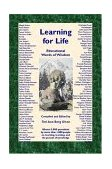

 Beatrix Potter “Thank goodness I was never sent to school; it would have rubbed off some of the originality.” ~Beatrix Potter Helen Beatrix Potter was born in London, England, on July 28, 1866. She was educated at home by a governess while her younger brother went away to boarding school. Young Beatrix felt that she learned more from her own self-study than from any textbook. From an early age, she was interested in fauna and flora. Potter was especially fascinated with flowers and small animals. Beatrix had many pets including rabbits, ferrets, frogs, newts, and a bat. Potter watched the animals for hours on end, sketching them and developing her abilities as an amateur artist. She also developed a love of landscape as she spent holidays in Scotland and the Lake District, where she enjoyed painting the scenery and observing nature. Miss Potter became respected throughout England in the field of mycology. She studied spore germination and the life cycles of fungi, and was one of the first to suggest that lichens are a symbiotic relationship between fungi and algae. Potter also made numerous detailed drawings and watercolors of lichens and fungi. Potter’s uncle attempted to enroll her as a student in the Royal Botanic Gardens at Kew, but she was rejected because she was a woman. Potter bequeathed her collection of over 450 fungi, microscopic, natural history and archaeology watercolors to The Armitt Library at Ambleside. Beatrix had also drawn, for her own enjoyment, illustrations to go along with Uncle Remus stories, and she was probably inspired as well by Aesop’s animal fables. Peter, one of her pet rabbits, was Potter’s original inspiration for the beloved Tale of Peter Rabbit. The Peter Rabbit story was begun as a letter to entertain a sick child, Noel Moore, the five-year-old son of her last governess, Annie Carter Moore. Miss Potter was 27 years old when she sent him the picture and story letter dated September 4, 1893. Recognizing its literary and commercial value, Moore encouraged Potter to publish the story. Beatrix borrowed back the letter in 1901, developed and expanded the tale, and made it into a book titled The Tale of Peter Rabbit and Mr. McGregor’s Garden. Miss Potter sent her slightly rewritten story to six publishers, but was turned down by all of them. So she began publishing and illustrating the stories herself. Since then, several generations of children have been delighted by the story of the adventurous bunny named Peter. Miss Potter also wrote The Tale of Jemima Puddle-Duck, The Tale of Mr. Jeremy Fisher, The Tale of Two Bad Mice, Mrs. Tittlemouse, and The Tale of Benjamin Bunny. With proceeds from the books, Miss Potter became financially independent of her parents and was eventually able to buy Hill Top Farm in the Lake District. When Potter’s parents died, she used her inheritance to buy more farms and tracts of land. At age 47, Potter married William Heelis, a local solicitor, and moved to Hill Top Farm permanently where she took up pastoral farming and sheep breeding while continuing to write and illustrate books for children. Potter published a total of twenty-three books. Potter died at the age of 77 on December 22, 1943. Beatrix left most of her property to a conservation organization, The National Trust. This included 4,000 acres of land, cottages, and fifteen farms. Her legacy has helped ensure that much of the Lake District landscape has remained unspoiled to this day. Her properties now lie within the Lake District National Park. While Beatrix Potter had no children of her own, Potter’s charming little tales became cherished by children around the world. The books have been translated into multiple languages and the stories have been retold in various formats. Potter’s books and the characters she created are still as popular today as when they were written. References http://www.peterrabbit.com/us/potters-world-victorian-childhood.asp - Beatrix Potter's early years. http://www.beatrixpottersociety.org.uk - The Beatrix Potter Society. http://www.lakedistrict.gov.uk - The Lake District, England's largest National Park.
Contact: . Thanks! Please click here for reprint permission.


These pages are a continuous work in progress.
|
Help Support this Site
and purchase items via our affiliate links. Thank you!
 
Thank you for visiting my |

